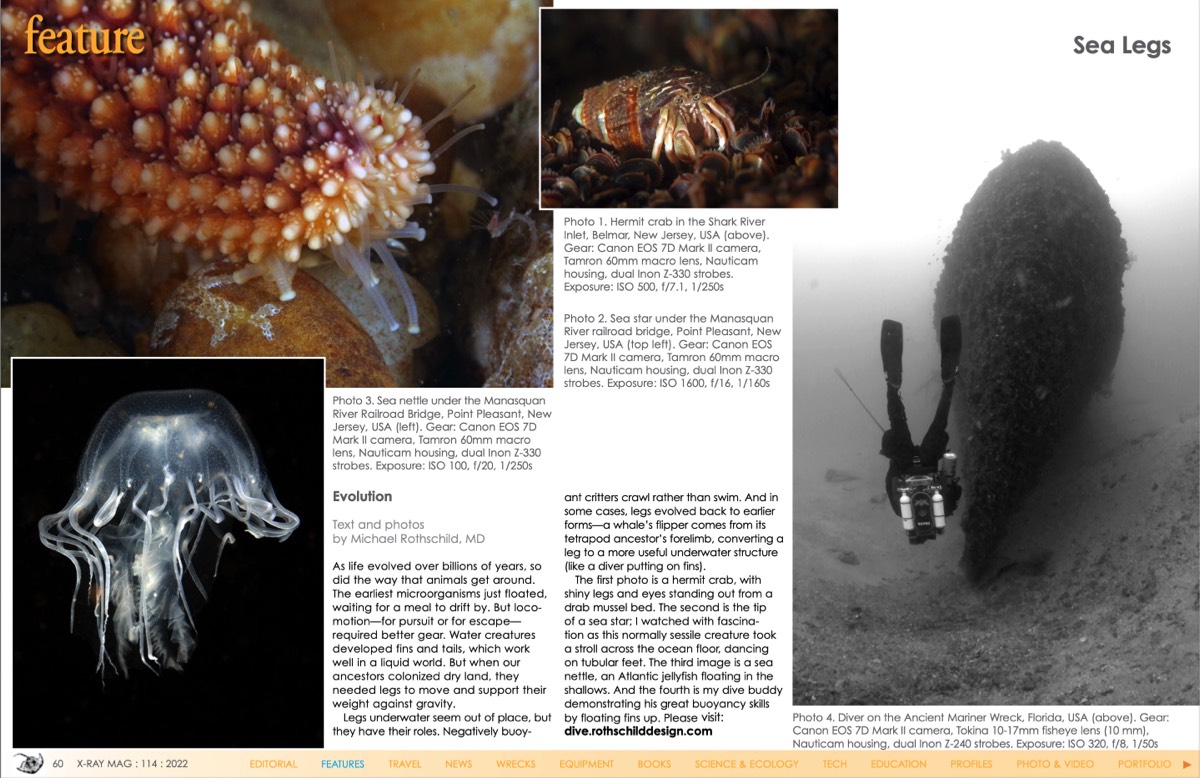Sea Legs
Contributors' Picks from Around the WorldPublished in X-Ray Magazine
Issue 114, September 2022
Text and Photos by Michael Rothschild
As life evolved over billions of years, so did the way that animals get around. The earliest microorganisms just floated, waiting for a meal to drift by. But locomotion—for pursuit or for escape— required better gear. Water creatures developed fins and tails, which work well in a liquid world. But when our ancestors colonized dry land, they needed legs to move and support their weight against gravity.
Legs underwater seem out of place, but they have their roles. Negatively buoyant critters crawl rather than swim. And in some cases, legs evolved back to earlier forms—a whale’s flipper comes from its tetrapod ancestor’s forelimb, converting a leg to a more useful underwater structure (like a diver putting on fins).
The first photo is a hermit crab, with shiny legs and eyes standing out from a drab mussel bed. The second is the tip of a sea star; I watched with fascination as this normally sessile creature took a stroll across the ocean floor, dancing on tubular feet. The third image is a sea nettle, an Atlantic jellyfish floating in the shallows. And the fourth is my dive buddy demonstrating his great buoyancy skills by floating fins up.
Legs underwater seem out of place, but they have their roles. Negatively buoyant critters crawl rather than swim. And in some cases, legs evolved back to earlier forms—a whale’s flipper comes from its tetrapod ancestor’s forelimb, converting a leg to a more useful underwater structure (like a diver putting on fins).
The first photo is a hermit crab, with shiny legs and eyes standing out from a drab mussel bed. The second is the tip of a sea star; I watched with fascination as this normally sessile creature took a stroll across the ocean floor, dancing on tubular feet. The third image is a sea nettle, an Atlantic jellyfish floating in the shallows. And the fourth is my dive buddy demonstrating his great buoyancy skills by floating fins up.
